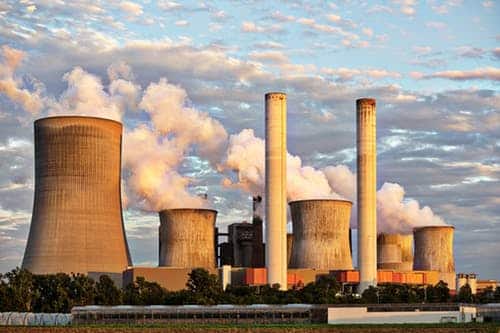U.S. EPA Releases Latest Greenhouse Gas Emissions Inventory

The U.S. Environmental Protection Agency released its annual Inventory of Greenhouse Gas Emissions and Sinks detailing national-level data on greenhouse gas emissions from 1990 to 2022. In 2022, net U.S. greenhouse gas emissions stood at 5,489 million metric tons of carbon dioxide equivalent, marking a 1.3 percent increase from the previous year. This is attributed mainly to higher energy consumption, reflecting the ongoing recovery in economic activity following the peak of the COVID-19 pandemic. However, there has been an overall 17 percent decrease in emissions since 2005, owing to various factors such as shifts in energy market dynamics, technological advancements leading to energy efficiency improvements, and alterations in energy fuel preferences towards lower carbon intensity options.
The Inventory encompasses seven key greenhouse gases and also quantifies carbon dioxide removal from the atmosphere through vegetation absorption. The greenhouse gases covered in the inventor are carbon dioxide, methane, nitrous oxide, hydrofluorocarbons, perfluorocarbons, sulfur hexafluoride, and nitrogen trifluoride. This policy neutral report has been compiled annually since 1993 and is submitted to both the United Nations Framework Convention on Climate Change and the Paris Agreement. EPA prepares the report in conjunction with experts from federal agencies, state authorities, research institutions, and industry associations. Developed nations are mandated to submit their national inventories to the United Nations by April 15 each year.
The latest release incorporates significant enhancements, including updated estimates for oil and gas emissions and the integration of long-term research findings into methodologies for assessing emissions and sinks from forested areas.
The Biden administration has made significant strides in climate change action, including a proposal to limit emissions from power plants, and finalizing vehicle emission standards and methane emission rules. The U.S. has also made progress in international climate engagement including pledging $3 billion to the Green Climate Fund. In alignment with efforts to address greenhouse gas emissions, the Biden administration recently released the first comprehensive federal strategy outlining pathways to reduce emissions from the buildings sector by 90 percent by 2050.
EnerKnol Pulses like this one are powered by the EnerKnol Platform—the first comprehensive database for real-time energy policy tracking. Sign up for a free trial below for access to key regulatory data and deep industry insights across the energy spectrum.
ACCESS FREE TRIAL